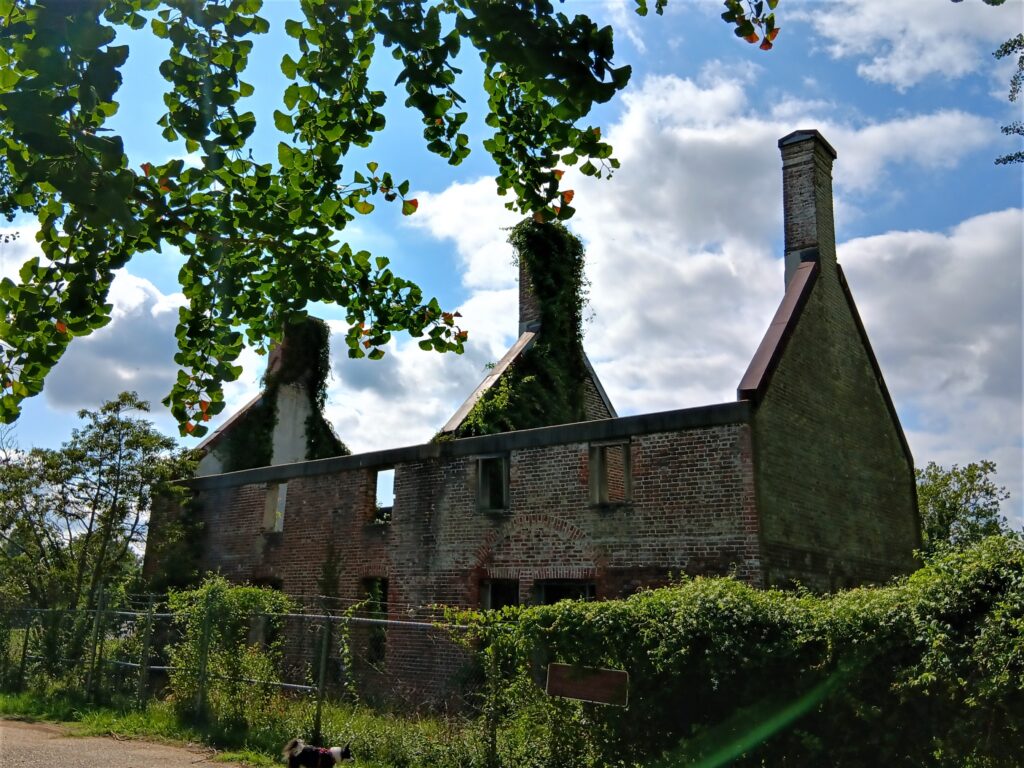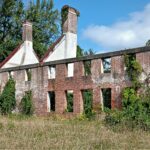 During COVID, we lived in Germany, where the restrictions were strict. But outdoor fitness, especially caring for animals, was allowed within your family group. Dave downloaded an app showing places near the house to hike. As you can imagine, our dog joined us for many of those walks. We found gorgeous mountain views and hidden lakes, but what we enjoyed most was discovering the ruins of a castle or manor house. Katharina, our landlady, was always surprised at the places we found she didn’t know existed. It seems you never explore your own backyard.
During COVID, we lived in Germany, where the restrictions were strict. But outdoor fitness, especially caring for animals, was allowed within your family group. Dave downloaded an app showing places near the house to hike. As you can imagine, our dog joined us for many of those walks. We found gorgeous mountain views and hidden lakes, but what we enjoyed most was discovering the ruins of a castle or manor house. Katharina, our landlady, was always surprised at the places we found she didn’t know existed. It seems you never explore your own backyard.
Now that we’ve moved to Southern Maryland, we are trying to continue the habit. While living in the RV, we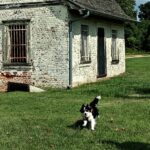 explored St Mary’s City, the birthplace and capital of Maryland, founded in 1634. This is an active archaeological site, and an attempt is being made to recreate the town based on the finds. But that will be the subject of another post.
explored St Mary’s City, the birthplace and capital of Maryland, founded in 1634. This is an active archaeological site, and an attempt is being made to recreate the town based on the finds. But that will be the subject of another post.
So, here we are in our new house, and while we wait for our furniture, it’s time to check out the surrounding area, our new backyard. Just down the street, perched above the Potomac River, are the ruins of Marshall Hall, home of William Marshall. Today was a perfect day to head over and let Widgit explore the grounds and attempt to befriend the large groundhogs.
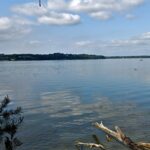 The hall lies opposite Mount Vernon, George Washington’s home, with a lovely view of the Potomac River. Located two miles upriver from the Piscataway town of Moyaone, the native presence impacted the life of the settlers living along the Potomac, and the Marshalls were no exception. There isn’t much left of the structure today, but it is clear it was a grand estate in its day. So, who was William Marshall?
The hall lies opposite Mount Vernon, George Washington’s home, with a lovely view of the Potomac River. Located two miles upriver from the Piscataway town of Moyaone, the native presence impacted the life of the settlers living along the Potomac, and the Marshalls were no exception. There isn’t much left of the structure today, but it is clear it was a grand estate in its day. So, who was William Marshall?
William Marshall was born in England and came to the Maryland Colony around 1640. They estimated his birth to be 1607, but not much of his early life is known. Most likely, he was an indentured servant. However, within nine years of his arrival, he purchased and sold land in his own right. William filed several applications for land grants based on his having transported new colonists from England. On 8 February 1650, Governor Calvert signed a decree laying out 500 acres on the west side of the Wisokomican in the name of Wm Marshall. William named the land Marshall Hall and developed it into a large farm. William married Katherine Hebden. The couple was survived by three children. By the time of his death in 1673, he held 1073 acres.
Their elder son, William II, inherited 550 acres in what is now Charles County. He married Elizabeth Hanson and lived on the property he inherited from his father along the river. Not much information exists of their time there other than the births of four children: William III, Barbara, Thomas, and Richard. On his deathbed in 1693, William III inherited the property at the age of eight.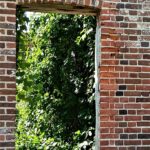
But it was Thomas who built the house in 1725, marrying Elizabeth Stoddard the following year. He was a slave owner and made significant improvements to the farm. After the death of Elizabeth, Thomas married Sabina Greenfield in 1756, and at about this time, he enlarged the hall. His son, Thomas II, inherited the farm and became one of the colony’s most prominent and wealthy men. He was friends with George Washington, who moved to Mount Vernon in 1754.
The hall remained in the Marshall family until 1866 when the family incurred significant losses during the Civil War, and Thomas Marshall V was forced to sell the home. The estate passed through several hands until it was purchased in 1895 by the Mount Vernon and Marshall Steamboat Company. It became a pleasure resort for the wealthy of Washington D.C., growing into an amusement park that eventually closed in 1979. In 1981, the roof burned, destroying the structure.
 The house is a perfect example of colonial Maryland architecture. It was constructed of brick in the Flemish Bond style of alternating long and short bricks. The house measures 27 x 60 feet and is aligned along the river. Two-thirds of the existing home was built in 1725, and the additional third was added by 1760. Many other plantation homes along the Potomac follow the same format. Each has two main doors, one facing inland and the other the river. The side fronting the river is always open to views both of the river and from the river. Often, such as Gunston Hall, this is a formal garden. Others, such as Mount Vernon, are laid to lawn. The land front is also open to a view of the house and is dominated by a carriage lane approaching the front door. Other buildings or wings flank the main structure in perfect symmetry. These are no longer present at Marshall Hall; however, their existence was proven by ground-penetrating radar.
The house is a perfect example of colonial Maryland architecture. It was constructed of brick in the Flemish Bond style of alternating long and short bricks. The house measures 27 x 60 feet and is aligned along the river. Two-thirds of the existing home was built in 1725, and the additional third was added by 1760. Many other plantation homes along the Potomac follow the same format. Each has two main doors, one facing inland and the other the river. The side fronting the river is always open to views both of the river and from the river. Often, such as Gunston Hall, this is a formal garden. Others, such as Mount Vernon, are laid to lawn. The land front is also open to a view of the house and is dominated by a carriage lane approaching the front door. Other buildings or wings flank the main structure in perfect symmetry. These are no longer present at Marshall Hall; however, their existence was proven by ground-penetrating radar.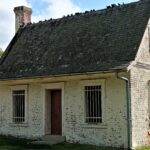
Additional discoveries include a kitchen dating from 1800, with a colonnade connecting it to the house. Standing perpendicular to the house is the small brick building used by Thomas Marshall III as a surgery when he served as a surgeon during the American Revolution. To the southeast stood a large carriage house/stable which was razed in 1966 when the picnic area was constructed. The grave of Thomas I (1695-1759) is in the small cemetery on the property, the oldest of the eighteen graves on the site.
In her day, she must have been a grand and beautiful lady. All in all, the site made for an excellent outing. Dave and I learned something about the local area where we will now live while Widgit continued his search for those groundhogs.
Have you found anything interesting in your backyard? I would love to hear about it!
